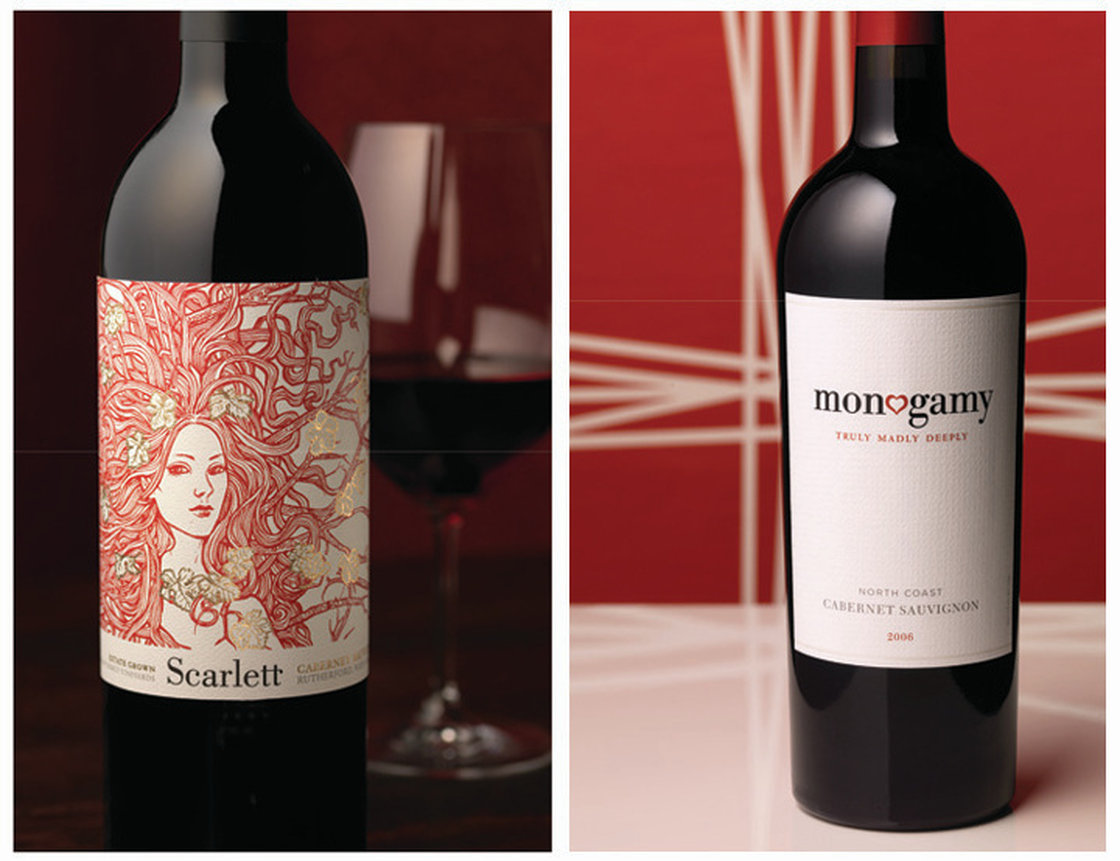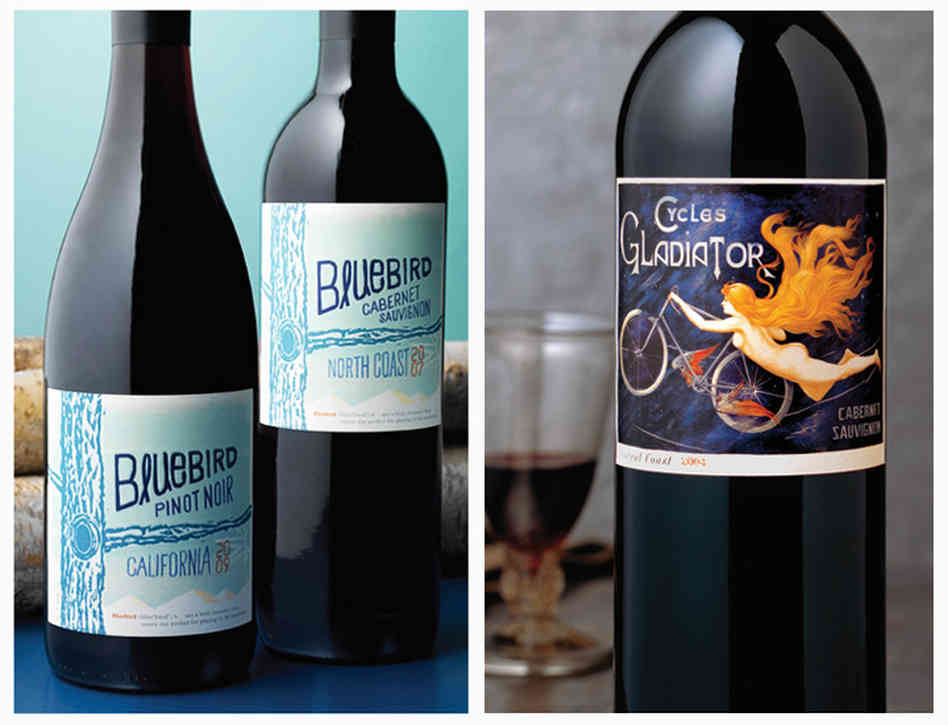
Photo: Tucker & Hossler/Courtesy of CF Napa Brand Design
Post by Michaeleen Doucleff, The Salt at NPR Food (10/11/13)
We're all guilty of it. Even if we don't want to admit it, we've all been suckered into grabbing a bottle of wine off the grocery store shelf just because of what's on the label. Seriously, who can resist the "see no evil" monkeys on a bottle of Pinot Evil?
But the tricks that get us to buy a $9 bottle of chardonnay — or splurge on a $40 pinot noir — are way more sophisticated than putting a clever monkey on the front.
A carefully crafted label can make us think the bottle is way more expensive than it is, and it can boost our enjoyment of the wine itself, says David Schuemann of CF Napa Brand Design, who has been designing wine packaging for more than a decade.
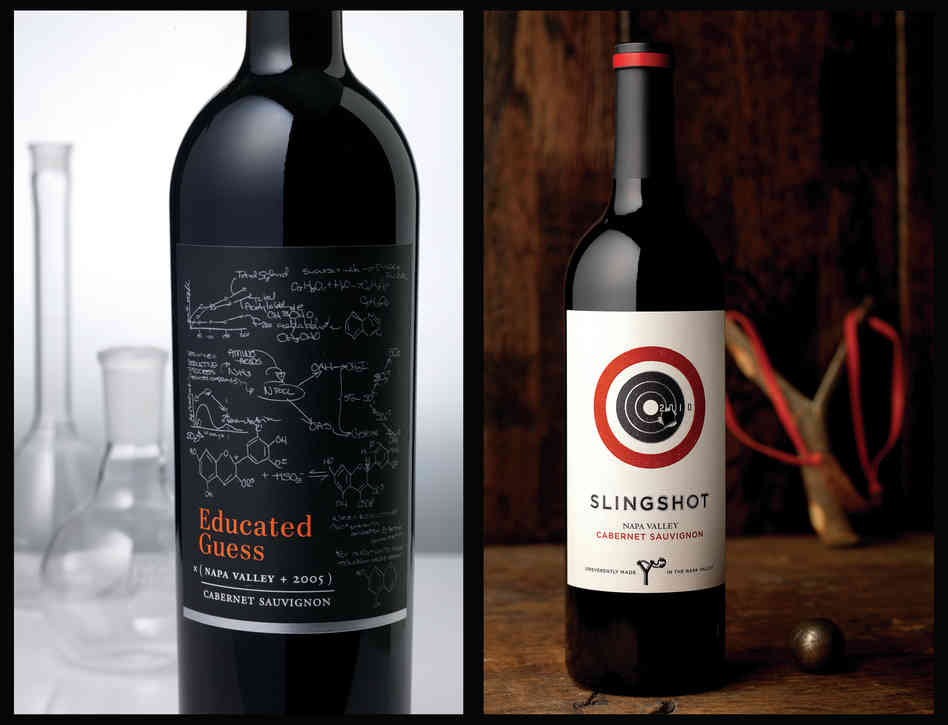
In his new book 99 Bottles of Wine, Schuemann spills the industry's secrets about how wine labels tickle our subconscious and coerce us into grabbing a bottle off the shelf. The book is also a feast for the eyes, with about 100 photographs of the sleekest, most eye-catching wine labels in the business.
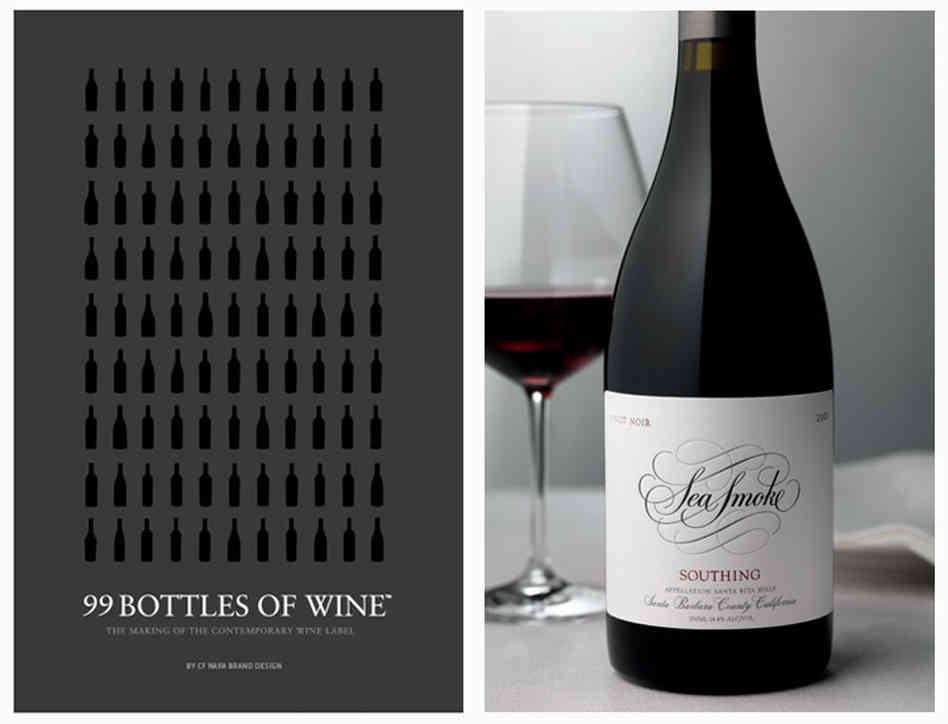
"We always make a wine look about $10 more expensive than it is. So then it appears like an even better value," Schuemann tells The Salt. "We add gold foil to the label or a gold stamping. We emboss the label or add a third dimension to give it a rich texture or tactile feel."
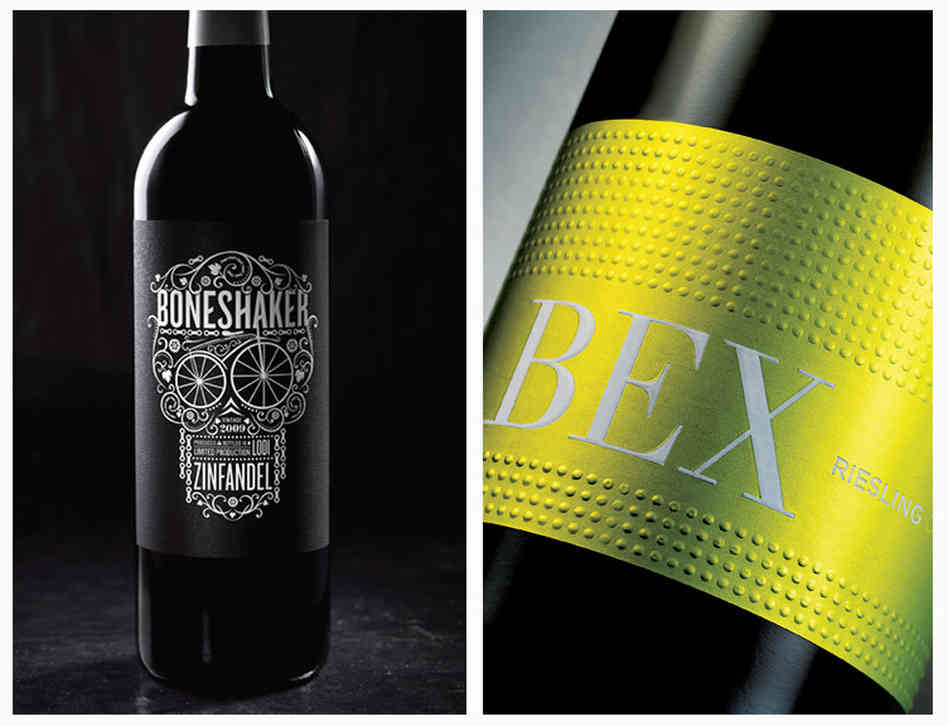
In general, people associate minimalist, uncluttered designs with high-end vintages and sophisticated flavors, Schuemann says. "More expensive labels tend to have a cream or white background with a simple logo. Maybe a splash of gold or metal. But they don't have critters on them. Otherwise, experienced wine drinkers think it looks cheap."
